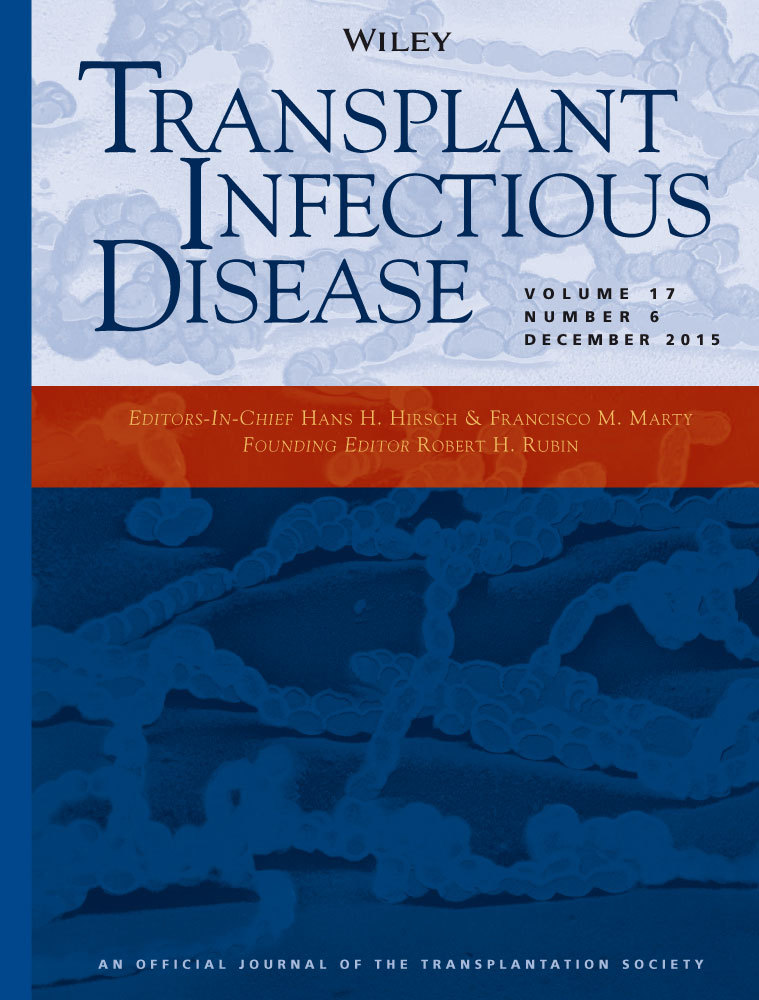Epidemiology and outcomes of carbapenem-resistant Klebsiella pneumoniae bacteriuria in kidney transplant recipients
Abstract
Background
Little is known about the epidemiology of carbapenem-resistant Klebsiella pneumoniae (CRKP) bacteriuria following kidney transplantation. We determined the incidence of post-transplant CRKP bacteriuria in adults who underwent kidney transplant from 2007 to 2010 at 2 New York City centers.
Methods
We conducted a case–control study to identify factors associated with CRKP bacteriuria compared with carbapenem-susceptible K. pneumoniae (CSKP) bacteriuria, assessed whether CRKP bacteriuria was associated with mortality or graft failure, and compared outcomes of treated episodes of CRKP and CSKP bacteriuria.
Results
Of 1852 transplants, 20 (1.1%) patients developed CRKP bacteriuria. Factors associated with CRKP bacteriuria included receipt of multiple organs (odds ratio [OR] 4.7, 95% confidence interval [CI] 1.1–20.4), deceased-donor allograft (OR 5.9, 95% CI 1.3–26.8), transplant admission length of stay (OR 1.1 per day, 95% CI 1.0–1.1), pre-transplant CRKP infection or colonization (OR 18.3, 95% CI 2.0–170.5), diabetes mellitus (OR 2.8, 95% CI 1.0–7.8), and receipt of antimicrobials other than trimethoprim-sulfamethoxazole (OR 4.3, 95% CI 1.6–11.2).
Conclusion
Compared to CSKP bacteriuria, CRKP bacteriuria was associated with increased mortality (30% vs. 10%, P = 0.03) but not graft failure. Treated episodes of CRKP bacteriuria were less likely to achieve microbiologic clearance (83% vs. 97%; P = 0.05) and more likely to recur within 3 months (50% vs. 22%, P = 0.02) than CSKP episodes. CRKP bacteriuria after kidney transplant is associated with mortality and antimicrobial failure after treatment.




